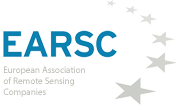I had the pleasure last week to make a short presentation to the EU Council Space Working Party. For those lost in the complexities of Brussels and EU governance this is the group which prepares decisions to be taken by the EU Council in all matters pertaining to space in the EU. But do not be confused with the ESA governance which is completely different - except that when the ministers meet together in either ESA council or the EU council, there are often the same people around each table; just that they are wearing different hats!! But the Space Working Party is - as the name suggests - where the real work is done to prepare the decisions.
They meet quite regularly; under the chair of the EU presidency which is currently Estonia whose representative had invited me to present. The topic on the table is to prepare for an informal minsters meeting in Tallinn in November where one topic will be to start to prepare for a new regulation on Copernicus defining the next phase of work from 2012 to 2027. Many ideas for new sensors and new Sentinel satellites are being developed,and whilst this is of strong interest to the EO Services sector, the concerns are more focused more on access to data and development of a new market in EO services. We have set out our thoughts in a dedicated position paper which is what I had been asked to present.
As the market is changing so rapidly, it is very hard to predict where it will be in even 5 years time. Europe has a strong industry today and needs to take steps to try to help position this for the future. We see a very strong trend towards on-line services even if today, we estimate that only around 5 % of the revenues of the sector are coming from automatically generated products. With the advent of high speed processing, cloud storage and machine learning the stage is set for a squeeze on traditional, hand-crafted products which dominate today's market. So the sector faces both opportunity and threat from two directions. Firstly, increasing availability of data is driving prices down but at the same time opening up many new possible products. Secondly, IT technology is reducing the skill-level and thematic knowledge needed to generate products but opening up the possibility of their entry into many new very large-scale markets.
How all this will play out is anyone's guess today. But I find it hard to imagine that over 3 decades of hard-won knowledge will be replaced overnight. I believe that this same expertise will be a platform from which to develop, but companies will need to be highly agile, innovative and ready to adapt. Hence, the key policy steps must be to help create the conditions for the industry. This is a challenge when the public stakeholders are also institutions with a long reaction time. It is even more difficult if there is no dialogue. Hence, our primary request in the position paper is to establish a formal mechanism whereby the industry viewpoint can be heard by the decision makers. The second request is to establish conditions whereby public customers - which are still the backbone of the market - can themselves become more flexible which leads to the third main request which is to concentrate on buying services and not infrastructure as has been the case in the past. This can truly lead to a situation where public and private working together can be a win:win situation.

This page has no comments.